Saturday Shoutout / Flip On Flies
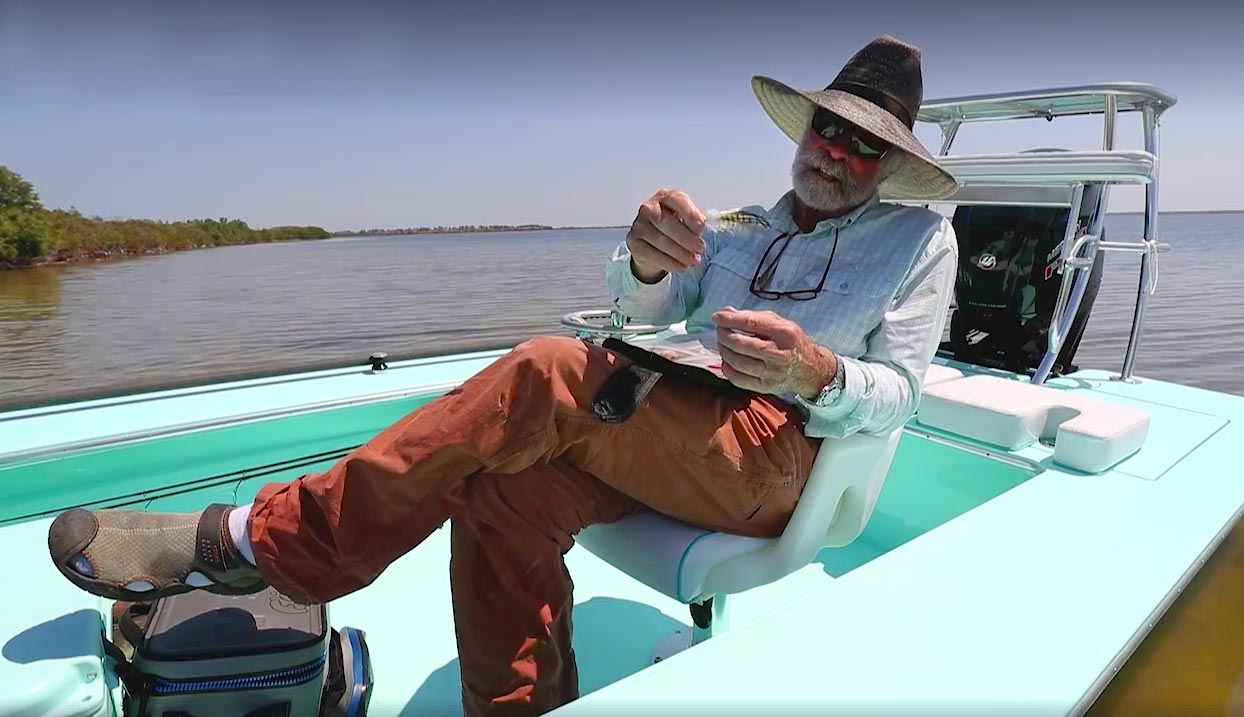
You could get your advice on fly selection from worse guys than Flip Pallot.
I’ve long thought that there are two types of fly tyers, the Engineer and the Artist. I don’t make a qualitative distinction between the two. I simply recognize that each comes at it from a different perspective. The Engineer ties beautifully consistent versions of proven patterns, while the Artist is moved by emotion and curiosity, seldom tying the same fly twice.
I am definitely the Artist and I’m not always especially proud of it. I often envy my friends who knock out deadly patterns by the dozens, but theres no fighting it. I am what I am. It did make me extremely happy to learn that Flip is right there in the boat with me.
It’s pretty cool to hear a guy of Flip’s status admit that he’s sometimes just making it up as he goes. I think really good anglers do more of that than they are comfortable admitting. Flip has done us a favor. If it’s good enough for him, you can get away with it too.
HERE’S FLIP PALLOT ON FLY TYING AND SELECTION.
Read More »The Double Herl Scud
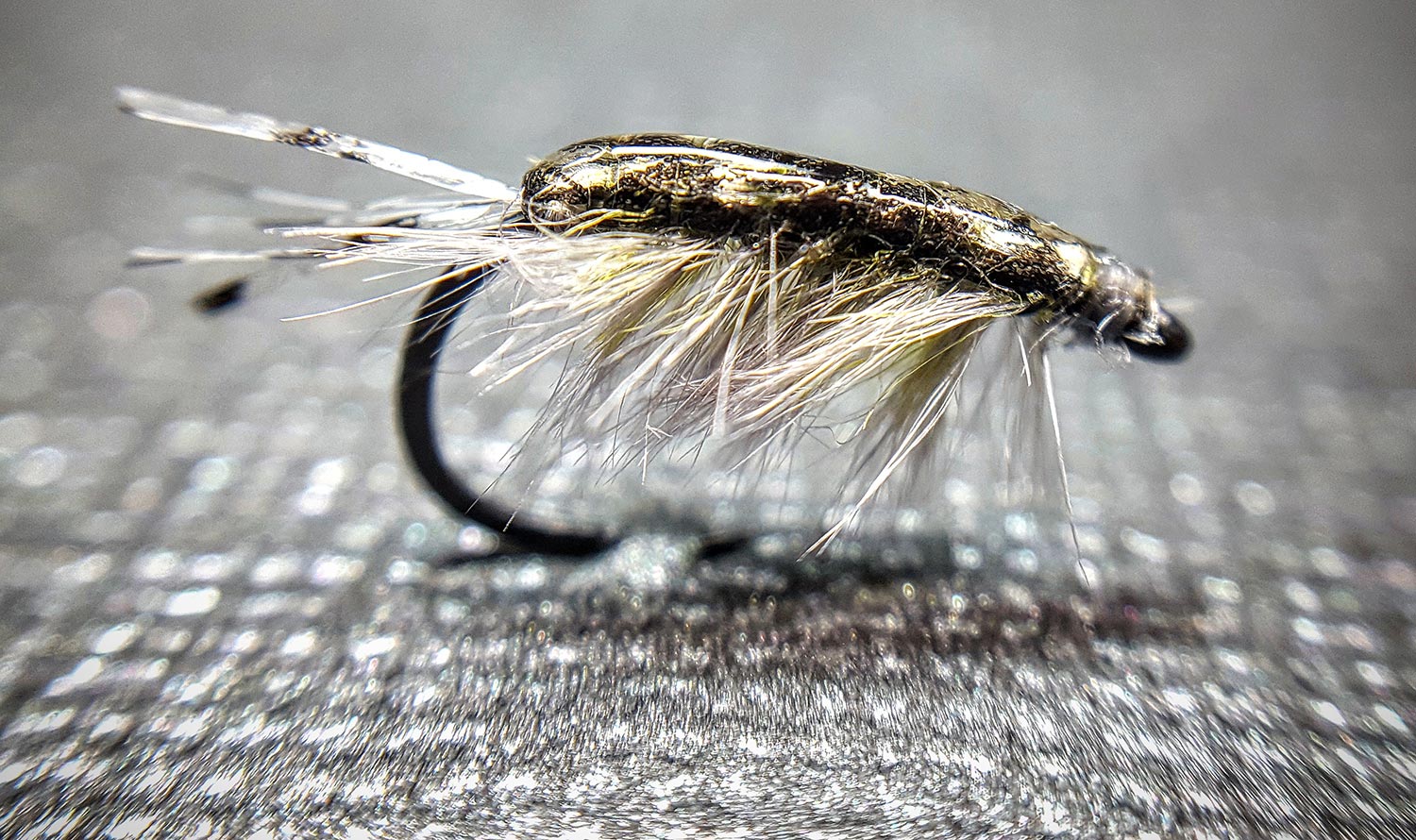
By Bob Reece
While complexity is sometimes beneficial, simplicity is often appreciated.
The double herl scud embraces the concept of ease, while producing consistently effective underwater results. It’s basic list of ingredients allow for size and color adjustments needed to match the naturals in the waters that you fish.
Scuds are prevalent in many still and moving fisheries. This is especially true in alkaline or limestone influences waters. The importance of these small crustaceans can range from a minor percentage of a trout’s diet to almost exclusive dominance of the menu. Their sizes range drastically from water to water, most commonly falling between sizes eighteen to twelve. Some waters are host to larger specimens reaching up to size eight. For the waters that you fish it can be very beneficial to collects samples. This will allow you to either tie or buy imitations that match the most common size and color range.
The light weight of this particular imitation makes it an ideal offering when fished on an intermediate sinking line with a sink rate of a couple inches per second. With this technique, the double herl scud can be presented throughout a wide depth range when pursuing still water trout. On moving water I trail this fly behind a more heavily weighted pattern in an effort to quickly reach the desired depth.
Tying time is a valuable commodity. Its worth to many fly fishers is matched only by the effectiveness of a pattern. The double herl scud balances these two elements by saving the tier time and effectively producing for the fly fisher on the water.
Watch the video and learn to tie the Double Herl Scud.
Read More »The Woolly Bugger Isn’t all that, Or is it?
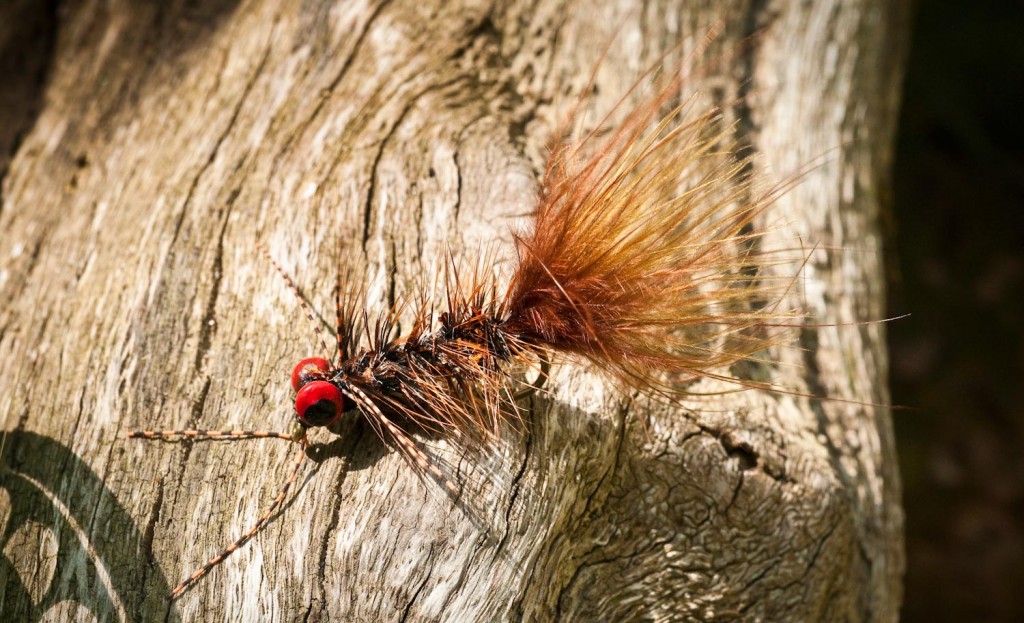
This isn’t Montana, Your Not Norman Maclean, and the Woolly Bugger isn’t all that.
This was a bumper sticker a guide buddy of mine had printed up a few years back. It was prominently displayed for his clients to read when they pulled up to greet him. That’s one hell of an ice breaker for checking fishing egos at the boat ramp, let me tell you. I give my boy J.E.B. Hall props for his comedic humor and gutsy style. For those of you who don’t know J.E.B., he’s a veteran Western North Carolina guide, Author of Southern Appalachian Fly Guide, and has spent multiple seasons guiding at Alaska West. Meet him one time and you’ll say to yourself, “this guy is the Johnny Knoxville of fishing”.
Most anglers fall into one of two categories when it comes to their perception of woolly buggers. They either love them or despise them. I love the fly pattern for two reasons. First, for its impressionistic design that’s capable of mimicking many different trout foods, and second, for its versatility in how the pattern can be fished. It’s rare for me to not break out a woolly bugger at some point during the day. When trout aren’t biting, I almost always can find fish willing to snack on them. The only time I keep woolly buggers out of the game and sitting on the bench, is when I’m fishing water where dry flies are the only thing required.
I believe in the woolly bugger so much, If I only had one pattern that I could take with me fishing, that would be it. Why the woolly bugger, you ask?
Read More »So I tried to go fishing today….Twice
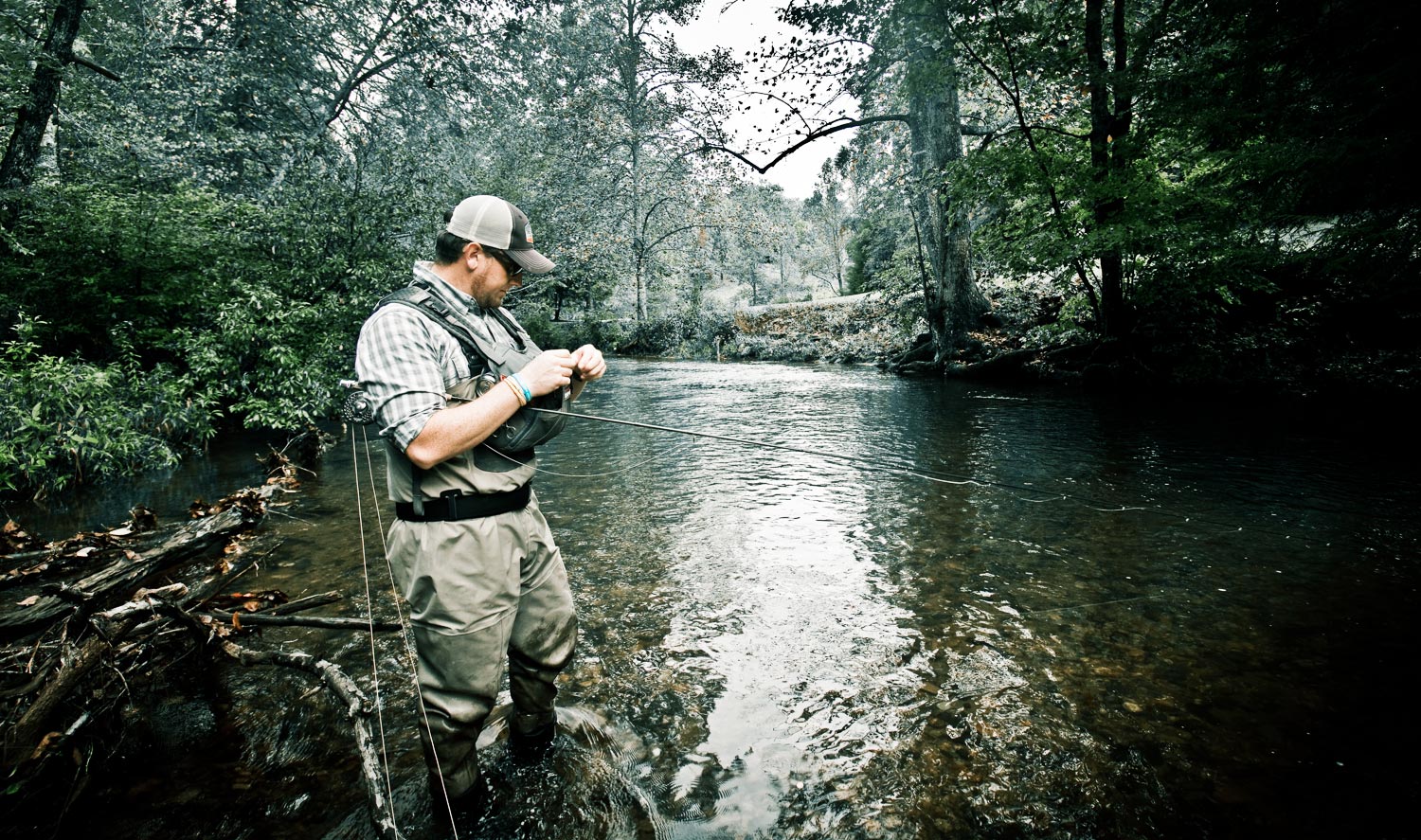
I had it all planned out. Kayak loaded. Gear prepped. Rods rigged. Alarm set.
The next morning was free of obligations, so, naturally, I planned to do some local fishing. I had debated between a couple of local pieces of water. The early morning topwater bite had been great, and the afternoon carp fishing had been even better on a local reservoir that I frequent, with the second option being a local creek, filled with chubby, educated shoal bass. With a tropical storm tracking its way up from the gulf, it would likely be the last time I got to hit the water before the rivers and streams blew out for several days.
Hitting the snooze is a habit of mine. I’m often punched a couple times and threatened with further bodily harm before dragging my groggy ass out of bed, and this morning was no different despite the usual excitement I feel about hitting the water. But after getting vertical, and the first sips of coffee, I’m ready to throw on some clothes and hit the door.
On the water by six o’ clock was the plan, taking advantage of as much daylight as possible. The drive to the put in at the reservoir is quick. Maybe seven minutes. Barely enough time to squeeze in a couple Chris Stapleton songs. I turn down the main drag and, immediately, I can see that there is something unusual in the middle of the road. That gate to the park and put-in is closed and locked. Technically the park isn’t supposed to open until 8am, however the folks that open the gate usually have it open well before first light, but today this isn’t the case. Not wanting to wait and hope that someone shows up to open the gate, I decide to drive back to the house, drop the kayak, grab my wading boots, and head for my “plan B”; the local creek filled with chubby, educated shoal bass.
A little further down the road, I found myself in the parking lot, ready to fish by 6:45am, and, after a little hike down the trail, I was fishing by 7:00am. Not planned, but that’s how it goes sometimes. The first nice pool is full of sunfish and bluegills, with some nice shoalies lurking amongst the rocks and timber. After several casts with no luck, I decided to move up to the next nice run/pool to try my luck there. This process would repeat itself a couple of times, until I made the decision to move well upstream to try my luck in some less-molested water. As I made my way up the rock outcropping, I decided to check out a run that always looks great, but is one of those pieces of water that just doesn’t hold many fish. Curiosity got the better of me though, and I stepped down the rock face to make a couple of casts. After all, today could be the day that I pull a personal best out of that run.
Settling my feet on a large boulder, I made my first cast into the run. It wasn’t the result I was after,
Read More »Two Great New Fly Rods From The Folks At RL Winston
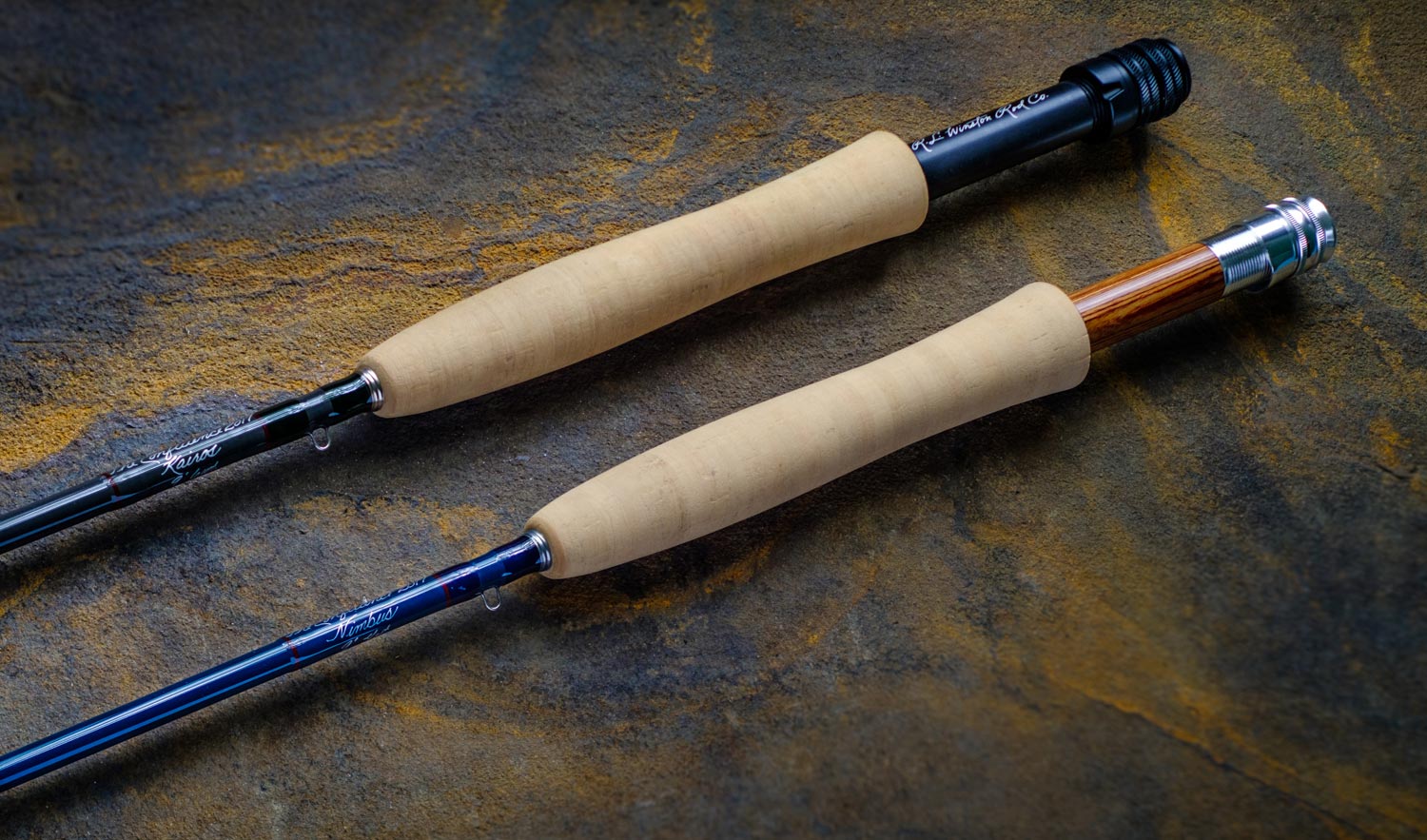
2018 is going to be another big year for new fly rods and Winston is stepping up with two new offerings, the Kairos and Nimbus.
These two rods are a unique offering for Winston in a couple of ways. They are intended to introduce new anglers to the Winston brand, without landing them in the poor house. Winston sees these rods as mid-priced without compromise, and from what I’ve seen I agree. In my case they are kind of preaching to the choir. I’ve been a fan of Winston rods for a long time. I’m still pretty excited about these new sticks and as eager to get them out on the water as any rod I own.
There are a couple of things which are different about the Nimbus and Kairos. Both rods are full graphite rods containing no Boron. This helps reduce both cost and weight. Both rods are made at home in Twin Bridges, Montana, by the same hands as the Air, B3X, B3 Plus and LS. They have aluminum hardware, rather than nickel silver, again saving cost and weight but neither rod compromises on quality or craftsmanship in any way.
The Kairos is quite different for a Winston. It is a very fast action rod. Very light with a blistering recovery rate and power to spare. I have the 6-weight and have been using it for streamer fishing. I generally use a 7-weight for streamers but this 6 has plenty of backbone for the job. The lighter rod makes for less fatigue at the end of the day.
The Kairos is a slick natural gray with a durable, gloss clear coat for protection. It has black aluminum hardware and beautiful cork. It is powerful, but eminently castable. After all, Winston is all about feel. The Kairos is available in freshwater and saltwater weights from 3-10 and 6- and 7-weight spey. Single hand models come in at $475 and Spey at $575.
The Nimbus is a more nuanced fly rod. A fast action with a more traditional Winston feel. It is a precise casting tool, deadly accurate and easy to load but with plenty of power for the long cast. The rod reminds me of
Read More »Sunday Classic / Caring for Bamboo Fly Rods
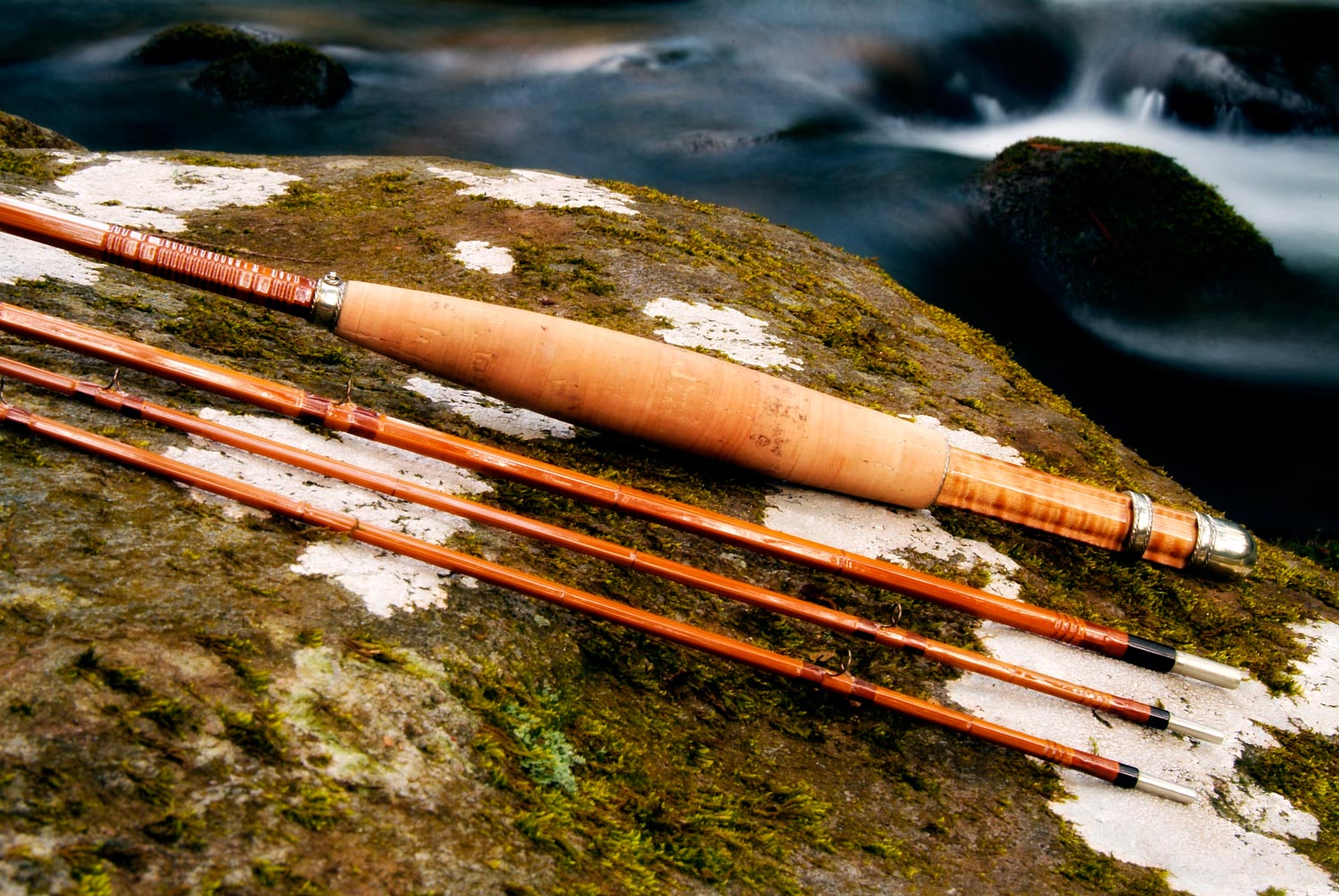
I’ve had several folks request some content on making simple repairs to bamboo fly rods. I fully intend to to that for you, but it means that I have to find the time to get in the shop. That seems unreasonably difficult these days. Before I get into doing repairs, I thought it would be prudent to write about caring for that bamboo rod and maybe avoid some repairs all together.
Bamboo is not as finicky as most people think. In fact it’s remarkably tough but there are some basic rules for handling and storing rods that will add to their longevity significantly. Unfortunately, too many guys end up with a nice bamboo rod before they know how to care for it and learn the hard way.
Most guys start out with graphite rods and assume that you treat a bamboo rod the same way. It’s a fly rod, right? Yes, but the materials are very different and some very common practices that are fine with a graphite rod will do serious harm to the boo.
General Care
I’ll start with the simplest and most common thing boo nubes do to their rods.
Saturday Shoutout / Rushing Waters
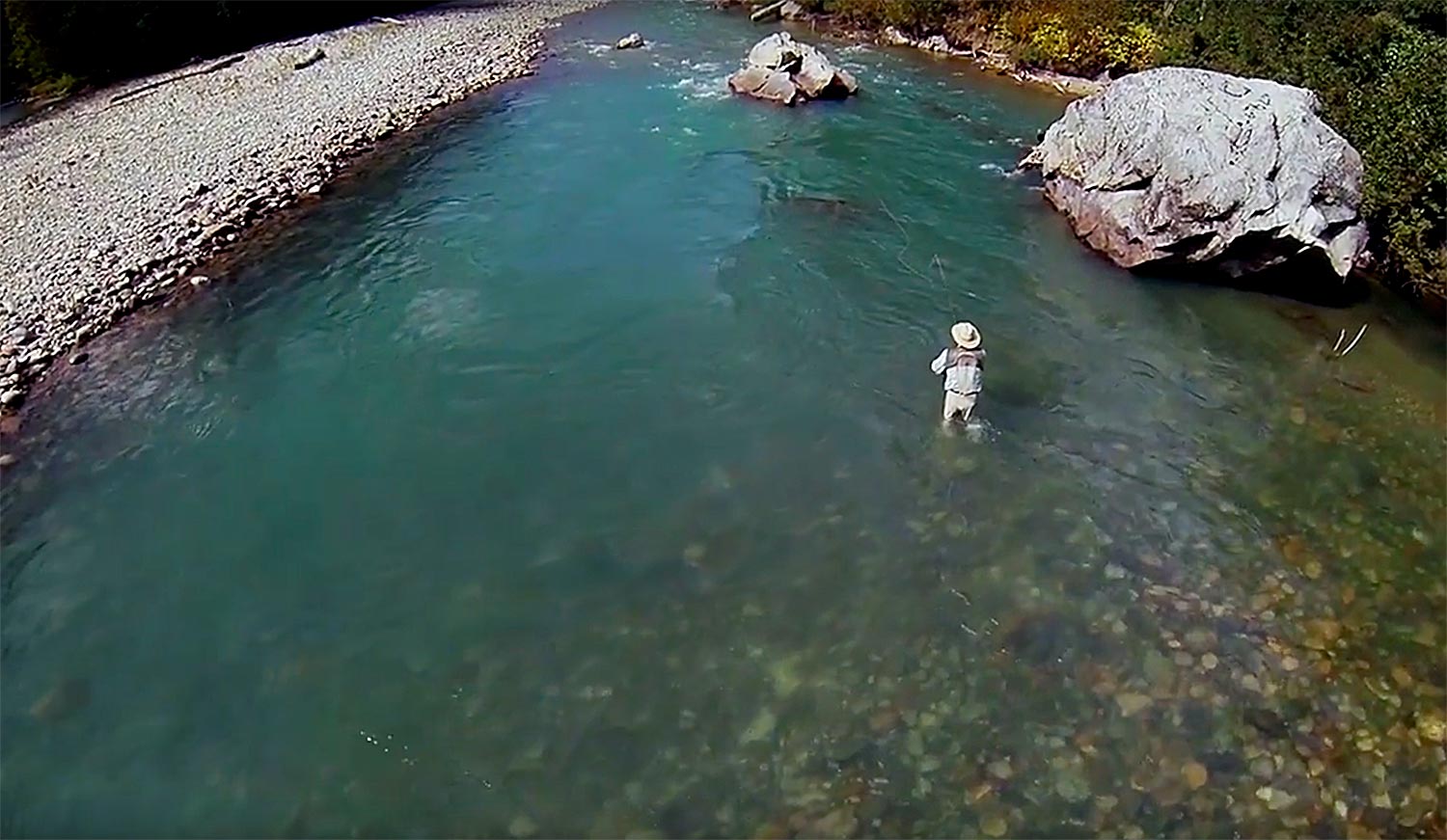
Take a few minutes to fish the Cascades with Todd Moen and Brian OKeefe.
The boys from Catch Magazine are hard at work in the Pacific Northwest. Todd Moen’s films are always like a mini vacation. Rushing waters is no exception. There’s beautiful footage, secluded locations and colorful cutthroat trout. If this doesn’t make you want to fish the Cascades, you should see a doctor.
ENJOY “RUSHING WATER”
Read More »11 Tips for Correctly Presenting Your Fly To Tarpon
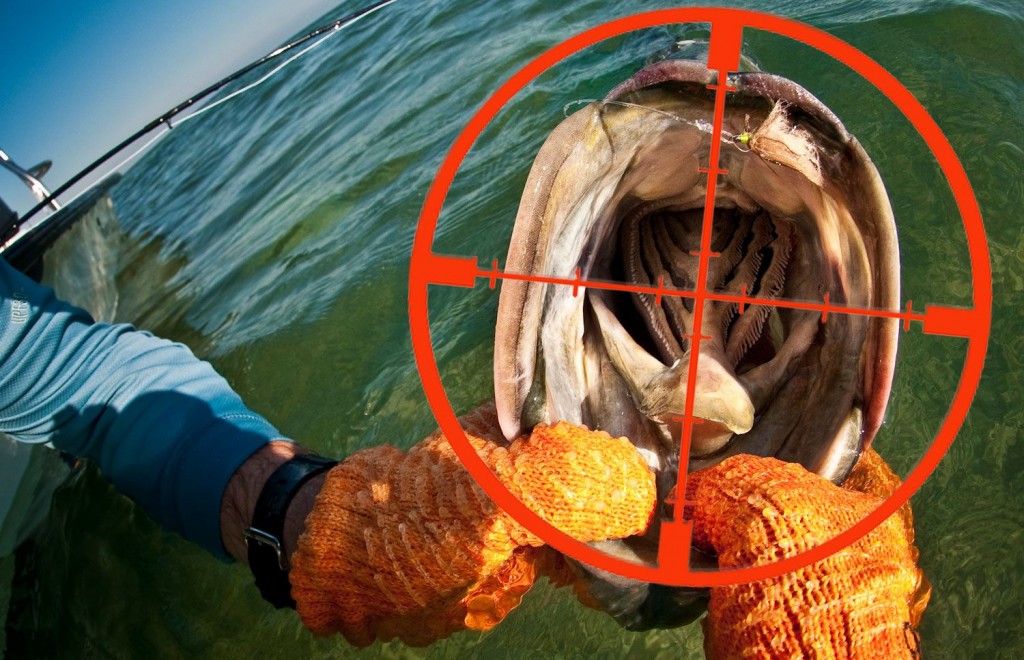
Anyone that’s fly fished for tarpon probably knows how easy it is to present the fly incorrectly.
If you miss your target, even by just a little bit, it can drastically lower your chances for getting a tarpon to eat. Cast the fly too close, and the tarpon will spook. Don’t lead the fish enough, and your fly won’t get down to the tarpon’s depth. Cross the fish at the wrong angle, and your fly will be moving towards the fish and it will spook. The list goes on and on.
Bottom-line, there’s a very small margin of error bestowed to anglers fly fishing for tarpon. You have to execute everything damn near perfect to put the odds in your favor, and even then, you aren’t guaranteed squat. Here’s the problem. The average angler that travels to fly fish for tarpon is not educated on how to read and respond accordingly to different fishing scenarios on the flats. A lot of this has to do with lack of experience and time on the water. If you find yourself falling into this category, prior to fishing, you should take the time to have your guide explain how you should handle common fishing situations that you’re likely to encounter. As a kid the same preparation was used by my Dad to walk me through how to make a clean kill shot on a deer. I can hear him now, “If the deer is faced in this direction, I want you to put the crosshairs here”. He must have gone over a dozen different scenarios during the drive up. By the time he was done talking, I felt like I had been hunting for years. It’s no different fly fishing for tarpon. Taking the time to have your guide walk you through different fishing scenarios will greatly increase your tarpon insight, fishing awareness and get you prepared for the real McCoy.
The second thing anglers should do to increase their success tarpon fishing is have a solid game plan or checklist that they’re willing to stick to on the bow. It must run like clockwork, flawlessly and consistently every time. The game plan should begin at the angler ready position, with fly in hand, and end with a well-calculated presentation cast. Success all boils down to angler aptitude and experience. The more you have of it, the better the chances you’re going to make the right calculations and decisions on the water.
I gave my good friend and Florida Keys flats guide, Captain Joel Dickey a call to look over my checklist and give me some pointers. Below is a checklist we came up with that every saltwater angler on the bow should follow closely to increase his/her chances at placing their fly in the right target zone, and maximize their hookup ratio.
Tip 1: Make sure your fly is not fouled on the hook and you have your fly line laid out organized in the ready position.
Read More »Forget Everything You Think You Know About The Scott G-Series Fly Rod
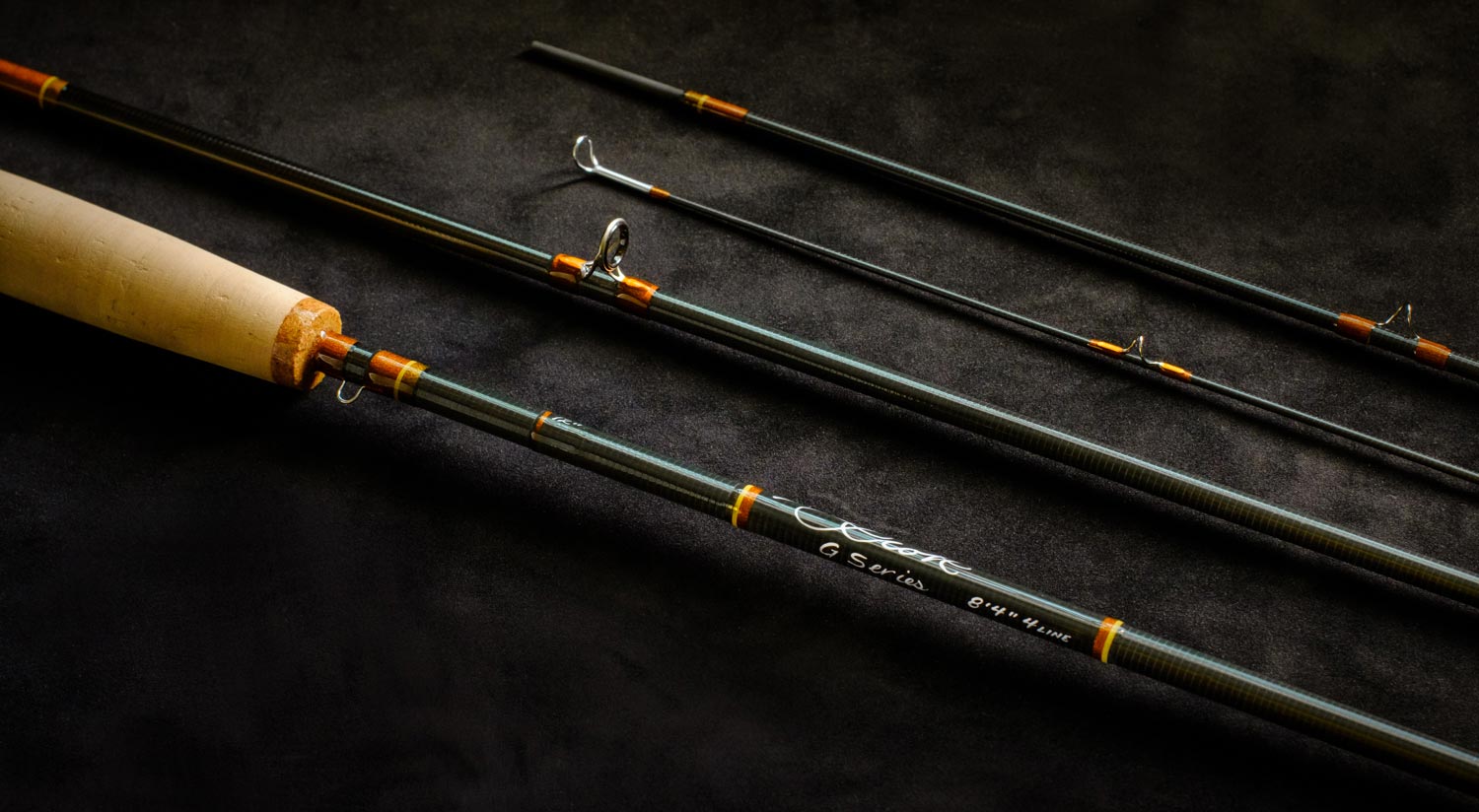
The new G-Series fly rods, from Scott, are a unique and refreshing offering.
The package arrived at my door with a note taped on the outside, saying that I couldn’t tell anyone about what was on the inside. On the one hand, I’m pretty happy to be on that mailing list, but on the other, it has not been an easy secret to keep. I knew this fly rod was something special the moment I picked it up.
It has been widely rumored that something big was coming from Scott this year. With the flagship models, Meridian and Radian, still pretty fresh, there’s been a lot of speculation about what Jim Bartschi has up his sleeve. I don’t know what I was expecting but it wasn’t a new G-Series rod. The first word out of my mouth was, “Brilliant!”
The G rods were first designed in the 1970s. That’s the Jurassic period of graphite fly rod design. The G-2 was introduced in 2006 and I have two of those rods, still in rotation. Eleven years later I assumed that the G was an evolutionary dead end. Like the Neanderthal but with a smoother action. Reviving this rod series at this point in time is both brilliant and refreshing.
The G rods were cutting edge in their day. It was actually the first 9’ 4-weight ever made. They were also the first rods to have internal ferrules. The G series rods have always been the mid-speed line from Scott. By today’s standards the 2006 G-2 is frankly slooooooow. It’s a beautifully casting rod and as good a tool now as ever but the action is more what you might expect from a modern fiberglass rod. They are great technical dry-fly rods, and I love them, but I have always struggled with them on a couple of points. They are not especially good with wind or weight, and for an all-around fly rod, that’s a problem.
Well, the new G-Series rods have nothing to do with that. This new rod looks almost identical to the G-2. Same natural graphite finish with brown and gold whipping. Internal ferrules like the G-2 and the classic grip. Once you slide the sections together and start to flex it, the new G tells a completely different story.
There is a boatload of technology in this rod and it comes together in a completely unique feel. The new G-Series flexes deep and really talks to the caster, by which I mean you know exactly what your line is doing by the feel of the rod. The recovery rate, however, is completely unexpected. This rod will
Read More »The New Jackson Mayfly Kayak

Jackson Kayak is known worldwide for making some of the best kayaks on the planet.
Be it for fishing, whitewater, or freestyle, performance and quality are two words that come to mind when you lay eyes on a Jackson.
Jackson Kayak has been in the fishing game for almost as long as they have been in business. Boats like the Coosa, Cuda, and Big Rig have all been proven on the water as serious fishing platforms. With numerous products available to the kayak angler today, there are a million ways to outfit each of these platforms to best fit your fishing needs. However, one of the techniques that still didn’t have a niche in the kayak industry was fly fishing. Sure, there have been accessories developed to help make toting fly rods a little easier, but that was much of the extent of fly angling accessories. Jackson saw this missed opportunity and has developed a kayak meant to cater to the fly angler. And this thing is ALL ABOUT FLY FISHING!
By now, especially for you kayak fishing enthusiasts, you have probably seen the new Jackson Mayfly on social media platforms, or maybe even on the water. For those of you that haven’t, if you are in the market for a solid fly fishing boat, this is the kayak that you want. For starters, forget all of the little accessories you thought you would need to get started as a fly angler chucking flies from a kayak. There are numerous fly-friendly features that have been thoughtfully built in to the platform of this awesome kayak which take a lot of the headaches out of fly fishing from a kayak.
Going through the kayak, several features have been built in to the Mayfly to accommodate fly equipment. The biggest difference seen on the Mayfly is the modified footrest system. Jackson ditched the pedal-style, side mounted footrest system for a new, center mounted footrest that eliminates line snags while also providing several inches of adjustability forward and aft. If you’re not a fan of footrests, this footrest is easily removed and affords the angler tons of free deck space, and leaves plenty of room for activities. The seat system also gets an upgrade with an adjustable, sliding seat bracket that allows for simple seat position adjustment on the fly. Just forward of the seat, on each side, are two fold-down fly boxes for storing flies on board the Mayfly which are secured with a bungee cord. On each side of the kayak is a new, molded-in, tubular rod storage system that allows you to safely store your rods while fishing, as well as during travel. To coincide with the rod storage, each side also has padded fly reel wells with bungee straps so your fly rod can be stored securely without having to either remove the reel, or place it precariously and hope it doesn’t get damaged. The rod storage system is setup for nine foot rods. Longer rods can be stored on the kayak, however the reels will not sit inside the reel wells. Behind the seat is a large area for storing coolers and other gear. I can easily fit my Orion 35 cooler in this area and still have room for a few smaller pieces of gear or a couple large fly boxes. New latches have been added to the forward and aft storage compartments which provide a solid seal and help keep water out of the hull, and a drop in tray has also been added to the forward compartment to allow easy access to other gear that may come in handy. Just like with many of Jackson’s vessels, there are numerous rails mounted along the kayak to allow for smart placement of various RAM mounted accessories, like
Read More »